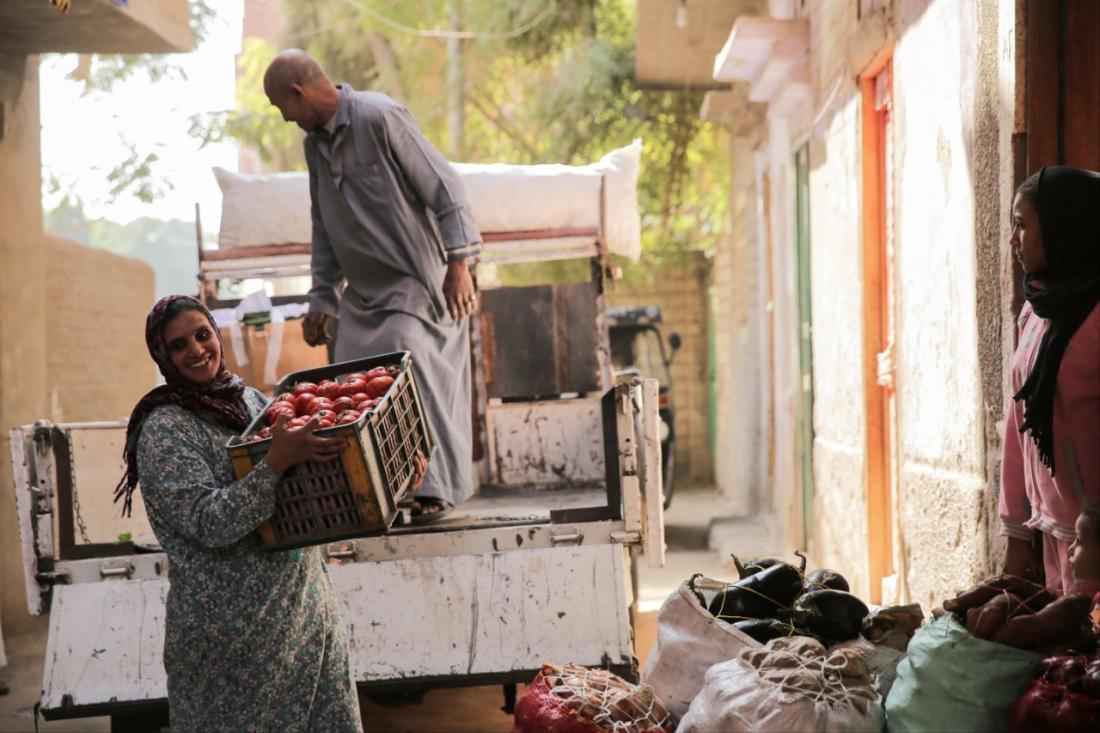Graduating the Ultra-Poor in Egypt
- Rural population
- Families and households
- Earnings and income
- Employment
- Empowerment
- Self-employment
- Women’s/girls’ decision-making
- Aspirations
- Gender attitudes and norms
- Food security
- Health outcomes
- Savings/deposits
- Apprenticeships and on-the-job training
- Business skills training
- Coaching and mentoring
- Financial literacy
- Savings
- Social protection
- Targeting
- Graduation approach
The poorest households—known as the “ultra-poor”—often depend on insecure livelihoods and face many barriers to transitioning out of poverty. The Graduation approach is a multifaceted intervention that combines a suite of productive assets and trainings to help households graduate out of extreme poverty. Following a series of evaluations of the Graduation approach in 15 other countries, researchers are now evaluating the impact of the Graduation approach on the livelihoods of the ultra-poor in Upper Egypt. Researchers will also assess whether cutting the cost of the intervention by half could lead to a more cost-effective program, and whether restricting the program to women would improve outcomes for the household.
Policy issue
For the ultra-poor—those who live on less than US$1.90 per day—self-employment is often the only viable alternative to menial labor. Yet many lack the necessary cash or skills to start a viable business. To alleviate these constraints, many international and local NGOs have begun supporting multifaceted programs that foster a sustainable transition to more secure livelihoods.
The Bangladesh Rural Advancement Committee (BRAC) designed a multifaceted livelihood program—known as the “Graduation approach”—to provide ultra-poor households with suite of productive assets and trainings to help them graduate from extreme poverty. Research by J-PAL affiliates has found that across many contexts, the program led to large and lasting improvements in consumption, food security, asset holdings, savings, and in some places, improved psychosocial well-being. The program has since been replicated by several implementing organizations across the world. Now, the Graduation approach is being piloted among many of the poorest households in Upper Egypt.
Context of the evaluation
Nearly one-third of Egypt’s population lived below the national poverty line in 2019/2020, and much of the country’s poverty is concentrated in Upper Egypt. Within the two Governorates where this evaluation takes place—Assiut and Sohag—the percentage of people living in poverty is 66.7 percent and 59.6 percent (in 2018), respectively, the highest among all Egyptian governorates. In some rural villages within these areas these numbers reach as high as 100 percent. The extreme poor in Egypt face significant challenges due to rising food prices and a lack of sustainable employment opportunities.
The Sawiris Foundation for Social Development brought together two local NGOs—Giving Without Limit Association in Assiut and Human Development Egyptian Association in Sohag—and BRAC to pilot the Graduation approach program, under the name of “Bab Amal” (A Door of Hope), among 3,469 ultra-poor households in Upper Egypt. Bab Amal aims to build sustainable livelihoods and resilience among the ultra-poor.

Details of the intervention
Researchers are conducting a randomized evaluation to understand the impact of the Graduation approach on ultra-poor households in Upper Egypt, as well as identify variations that could make the program more cost-effective. The Graduation approach is a multi-component livelihood program which provides ultra-poor households with a productive asset (such as livestock or supplies for petty trade), financial and technical training to manage the asset, access to savings groups and counselling, consumption support, linkages to government services and community solidarity committees, and home coaching visits by facilitators to help them graduate from extreme poverty.
To identify the poorest of the poor, researchers collected data on nearly 26,000 households in Assiut and Sohag, and utilized a proxy means test that uses observable assets to predict poverty. Households that were assessed to be not poor enough to participate based on basic criteria were then filtered out, and, among the remainder, community leaders and representatives were asked to identify the poorest half of households in their communities. The identified households were surveyed using a more detailed questionnaire to further screen the sample. Based on this process, researchers determined the final sample of 3,469 ultra-poor households.
Researchers randomly assigned the eligible households to one of three intervention groups that varied in the intensity of support and whether the program was targeted towards women, or a comparison group that did not receive the graduation program:
| Program components | Standard program (864 households) | Low-cost program (773 households) | Female-targeted program (823 households) | Comparison group (1009 households) |
|---|---|---|---|---|
| Monthly consumption support | EGP400 (US$25) | EGP300 (US$19) | EGP400 (US$25) | None |
| Asset Choice | Chosen by household from a set of assets valued equal to EGP10,000 (US$633) | Chosen by household from a set of assets valued equal to EGP5,000 (US$316.5) | Chosen by household from a set of assets conducive to female participation valued equal to EGP10,000 (US$633) | None |
| Monthly support meetings and visits | Two household and two group visits | One household and one group visit | Two household and two group visits | None |
In regular home and group visits, facilitators discussed social and health issues with participants, including maternal and child health, hygiene, gender empowerment, and more. In addition to these transfers and counseling sessions, all groups received technical training for the asset, access to an emergency health fund, linkage to government services, assistance obtaining identification documents, access to village solidarity committees, and access to a savings group.
Researchers are measuring the program’s impacts on a variety of outcomes, including aspirations and empowerment, income, employment, consumption, nutrition, household finance, gender attitudes, women’s and girls’ decision-making, and health. In addition to tracking progress out of poverty, researchers are seeking to understand if a half-cost version of the Graduation approach could lead to more cost-effective impacts, and how the household’s choice of who receives the asset and training affects outcomes.
Results and policy lessons
Research ongoing; results forthcoming.


